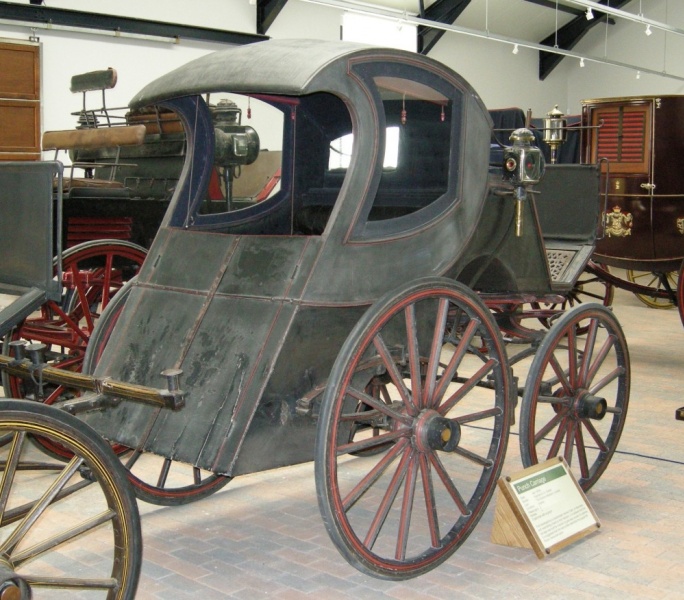Listed in 1 collection
Listed at 1 museum
Listed for 1 maker
Quick Details
Carriage Type
Punch Carriage
Date of Production
late 19th century
Accession or Inventory Number
ARL/CM/W/6
Materials used
Paint, Wood, Iron, Wool Box Cloth, Brass, Silk, RubberSummary of Punch Carriage
Punch Carriage built by Hayman and Co. of Exeter circa 1870 for a single horse. This carriage has an enclosed box, trimmed in black leather. The body is on full elliptic springs and has a pair of shafts and two candle lamps. The interior has four cushions and is of dark blue wool cloth with red blinds. Painted black with red lining.
This unusual carriage type is said to have been designed by a coachbuilder named Clark, of Aberdeen, for a country doctor. The derivation of the name is not known, but it has been suggested that the profile of the back of the carriage is like the silhouette of Mr. Punch. This example was built by Hayman & Co., the well-known Exeter coachbuilder, in the late 1800s. The design provided easy access to the body, with room for the doctor to write up his notes while protected from the elements. It was also useful should the doctor want to transport a patient in reasonable comfort. It can carry two passengers and was driven by a coachman with a groom beside him, and pulled by one horse. It is evident that the design was not popular, because carriages of this type are not seen in old photographs, and this is believed to be the only example to have survived. This carriage is on loan from the Science Museum, London.
Dimensions
Height: 6ft 10 1/4"
Length: 8ft 7 3/4"
Width: 5 ft 5"
Full description
A Punch Carriage has a rearward facing two seater body with half height entrance doors and leather roof. A roof hatch allows for communication with the coachman. The coachman’s seat has single end seat rails. The front floor and the footboard are sunk between moulded brackets. Two doors are hung on two pairs of butt hinges and with no handles. Passengers would have to step into this carriage from the ground as there is no step for entrance to main body. The outer stock hoops of the front wheels have a jagged surface so that they could be used as a step to mount the coachman's seat. Fixed windows are in the sides of body, they have frames covered with blue cloth, and a front window is on the nearside only.
Oval fronted gig lamps with brass trim are on lamp irons and bolted to the sides of the boot under the coachman's seat.
The wheels are 12 and 14 spoke English pattern with wired-on rubber tyres on collinge axles with the front axle compassed up and the back one straight. Open futchell fore carriage with elliptic springs and provision to fit a pair of independent shafts. A rolling bar brake is fitted with wood blocks faced with iron.
This Punch Carriage is painted black on the body, wheels and carriage with fine red lines on the body mouldings and a broad red line and two fine red lines on wheels and carriage.
On the coachman's seat a long driving cushion with additional cushion on coachman’s side is covered in dark blue cloth with black leather cloth piping. A seat fall is in dark blue cloth with black leather cloth backing. White ribbed rubber mat with punched pattern in the footwell. The interior is upholstered in dark blue cloth with button tufts with a seat back of black deep buttoned morocco leather. Two seat cushions and seat fall are in dark blue cloth with similar seaming laces and leather cloth undersides. The floor and sides of footwell are covered with floorcloth. Black leather cloth door linings with blue broad laces and red silk taffeta spring curtains.
Inscriptions
On the axle caps: HAYMAN & CO.EXETER
Science Museum Inventory Number: 1938-542
Condition report
This Punch Carriage is owned by The Science Museum and currently in the care of The National Trust at the Arlington Court Carriage Museum.
Arlington Court,
Arlington,
near Barnstaple,
Devon,
EX31 4LP
https://www.nationaltrust.org.uk/arlington-court-and-the-national-trust-carriage-museum
Picture credit
The National Trust/Elizabeth Jamieson

 Carriage Foundation
Carriage Foundation